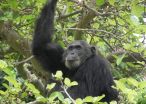(Press-News.org) ROCHESTER, Minn. -- Study results of one-year data for more than 12,000 patients who had transcatheter aortic valve replacement (TAVR) in the United States show an overall one-year death rate of 23.7 percent and a stroke rate of 4.1 percent, according to a study published in the March 10 issue of JAMA.
"Transcatheter aortic valve replacement has become transformational for patients who need a new valve and are at high-risk for surgery or inoperable. But we have been lacking long-term data for this group of patients who are considering this procedure," says study lead author David R. Holmes, Jr., M.D., a Mayo Clinic interventional cardiologist. "Before this study, we only had 30-day information. This is a milestone and will help us better guide patients and learn as physicians."
For the study, researchers used the Transcatheter Valve Therapies Registry, developed by the Society of Thoracic Surgeons and the American College of Cardiology, combining 12,182 TAVR patient procedures performed from November 2011 through June 2013 and linking to Centers for Medicare and Medicaid Services administrative claims for one-year data using direct Medicare patient identifiers (name and social security numbers).
Other important results from the study are:
Median age of patients was 84 years old, and 52 percent of patients were female.
8 percent of patients were discharged directly to home.
Thirty-day mortality was 7 percent.
4 percent of survivors were re-hospitalized only once, and 12.5 percent twice.
TAVR received U.S. Food and Drug Administration approval in 2011. It is used with increasing frequency for the treatment of severe aortic stenosis in patients who are at high or prohibitive risk for surgical aortic valve replacement, Dr. Holmes says.
Aortic valve stenosis happens when the valve narrows. The narrowing prevents the valve from fully opening, restricting blood flow from the heart into the aorta and then to the rest of the body. In TAVR, a minimally invasive procedure, physicians access the heart through a blood vessel in the leg or, less often, through an incision in the chest. A catheter is inserted through the access point, and the physician guides the catheter to the heart. Once in place, the replacement valve is passed through the catheter and positioned into place, and catheters are removed.
INFORMATION:
Other study authors and members of the TVT Registry are J. Matthew Brennan, M.D., M.P.H., David Dai, Ph.D., Sean O'Brien, Ph.D., and Sreekanth Vemulapalli, M.D., all of Duke Clinical Research Institute; John Rumsfeld, M.D., Ph.D., Denver VA Medical Center; Fred Edwards, M.D., University of Florida; John Carroll, M.D., and Fred Grover, M.D., both of University of Colorado; David Shahian, M.D., Massachusetts General Hospital; E. Murat Tuzcu, M.D., Cleveland Clinic; Eric Peterson, M.D., M.P.H., Duke University Medical Center; Ralph Brindis, M.D., M.P.H., University of California; and Michael Mack, M.D., Baylor Scott & White Health.
About Mayo Clinic
Mayo Clinic is a nonprofit organization committed to medical research and education, and providing expert, whole-person care to everyone who needs healing. For more information, visit http://mayocl.in/1ohJTMS, or http://newsnetwork.mayoclinic.org/.
MEDIA CONTACT: Traci Klein, Mayo Clinic Public Affairs, 507-284-5005, email: newsbureau@mayo.edu
MADISON, Wis. -- In a study published March 9 in Nature Chemistry, University of Wisconsin-Madison chemistry Professor Kyoung-Shin Choi presents a new approach to combine solar energy conversion and biomass conversion, two important research areas for renewable energy.
For decades, scientists have been working to harness the energy from sunlight to drive chemical reactions to form fuels such as hydrogen, which provide a way to store solar energy for future use. Toward this end, many researchers have been working to develop functional, efficient and economical methods ...
From AGU's blogs: More urban heat; less summer fog, on California coast
The summer fog that shrouds coastal southern California - what locals call the June Gloom - is being driven up into the sky by urban sprawl, according to scientists who have studied 67 years of cloud heights and urban growth in the region. Less fog may, at first, seem like a good thing. But less fog is bad news for native plants in the coastal hills and mountains, which depend on the cool fog as their only source of water during the rainless summer months. So less fog means warmer, drier, less healthy ...
Red lead is most familiar to us in orange-red rustproof paint. Artists have treasured the brilliant color of this pigment for their paintings since ancient times. However, various ageing processes cause discoloration of the saturated hue over time. Thanks to a combination of X-ray diffraction mapping and tomography experiments at DESY´s synchrotron light source PETRA III, Belgian scientists have now explained an additional step in the light-induced degradation of lead red. The key to their discovery was the identification of the very rare lead carbonate mineral plumbonacrite ...
A team of scientists led by Johns Hopkins cardiologist and biomedical engineer Hiroshi Ashikaga, M.D., Ph.D., has developed a mathematical model to measure and digitally map the beat-sustaining electrical flow between heart cells.
The work, the scientists say, could form a blueprint for vastly more precise imaging tests that capture cell-to-cell communication and pinpoint the tiny clusters of cells at the epicenter of complex, life-threatening arrhythmias. Such imaging approaches, they add, would enable precision-targeted, minimally invasive treatments that eliminate ...
Infectious disease should be a key consideration in wildlife conservation, suggests a study focused on primates in Tanzania's Gombe Stream National Park, published by PLOS Neglected Tropical Diseases. The study investigated the parasite Cryptosporidium and cross-species transmission risks among humans, wild primates and domesticated animals within the greater Gombe ecosystem.
"We found that people are likely exposing the endangered chimpanzees of Gombe to a particular species of Cryptosporidium, which may be contributing to their decline," says Michelle Parsons, a PhD ...
Computers that function like the human brain could soon become a reality thanks to new research using optical fibres made of speciality glass.
The research, published in Advanced Optical Materials, has the potential to allow faster and smarter optical computers capable of learning and evolving.
Researchers from the Optoelectronics Research Centre (ORC) at the University of Southampton, UK, and Centre for Disruptive Photonic Technologies (CDPT) at the Nanyang Technological University (NTU), Singapore, have demonstrated how neural networks and synapses in the brain ...
Scientists on two continents have independently discovered a set of celestial objects that seem to belong to the rare category of dwarf satellite galaxies orbiting our home galaxy, the Milky Way.
Dwarf galaxies are the smallest known galaxies, and they could hold the key to understanding dark matter, and the process by which larger galaxies form.
A team of researchers with the Dark Energy Survey, headquartered at the U.S. Department of Energy's Fermi National Accelerator Laboratory, and an independent group from the University of Cambridge jointly announced their findings ...
People who lose their jobs are less willing to trust others for up to a decade after being laid-off, according to new research from The University of Manchester.
Being made redundant or forced into unemployment can scar trust to such an extent that even after finding new work this distrust persists, according to the new findings of social scientist Dr James Laurence. This means that the large-scale job losses of the recent recession could lead to a worrying level of long-term distrust among the British public and risks having a detrimental effect on the fabric of society.
Dr ...
DARIEN, IL - A new study finds that obstructive sleep apnea is associated with a significantly increased risk of motor vehicle accidents, and this risk is reduced when sleep apnea is treated effectively using continuous positive airway pressure (CPAP) therapy.
Results show that patients with sleep apnea were nearly 2.5 times more likely to be the driver in a motor vehicle accident, compared with a control group of other drivers in the general population. Further risk analysis found that severe excessive daytime sleepiness, a short sleep duration of 5 hours or less, and ...
Many mammals -- and some birds -- escape the winter by hibernating for three to nine months. This period of dormancy permits species which would otherwise perish from the cold and scarce food to survive to see another spring. The Middle East, with temperate winters, was until recently considered an unlikely host for hibernating mammals.
New research published in Proceedings of the Royal Society of London by Tel Aviv University researchers is set to not only correct this fallacy but also change the very concept of hibernation. Prof. Noga Kronfeld-Schor, Chair of the Department ...

